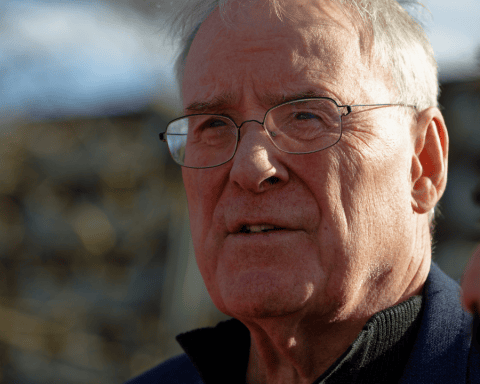Gord Nixon stepped up to the microphone at a conference in Toronto last fall and announced that Canada’s largest financial institution was allocating $20 million of its assets to social impact investments. The chief executive of Royal Bank of Canada eloquently described how this program could help spark entrepreneurship, innovation and even provide reasonable investment returns to the bank. He also called on the CEOs of other banks to get on board.
Nixon’s leadership should be saluted, but an opportunity was missed that day. He could have asked all people, not just banks, to consider the impacts of their investments – to help make the world a better place while also improving their investment returns.
That he didn’t make this broader appeal is no surprise. Impact investing, as it’s typically (and narrowly) defined, is at best a niche concept. It incorporates a range of emerging investment products like social impact bonds, microcredit financing, green building mortgages, social venture funds, and so on. These products are mostly being adopted by private foundations, and now banks are embracing them as bolt-on strategies that extend their mission or brand.
These allocations by foundations and banks, while a start, will be inadequate to meet our greatest social and environmental challenges. Royal Bank’s $20 million commitment, for example, is like finding a penny in a couch cushion for an institution with $750 billion in assets.
A much broader approach is required. Impact investing should be defined more by philosophy and strategy than by products. It should embrace all investors, partially because it will take a collective effort to build a more sustainable future but mostly because it can be the path to superior investment returns.
The challenges confronting the world today are daunting. After quadrupling in the 20th century, our current global population of about seven billion is expected to grow to nine billion by 2050. Yet the energy discoveries that have fuelled the expansion to date are declining in productivity, and new discoveries are not keeping pace with this decline.
Meanwhile, the ability of the globe to supply sufficient quantities of clean air, water and productive land in the face of continued population and industrial expansion is by no means a certainty. These questions of resource and environmental sustainability occur against a backdrop of geopolitical tensions, unprecedented imbalances in trade, and an evident shift in economic power from the West to the East.
When confronted by an uncertain future of growing challenges, an appropriate societal response is to save more for the proverbial “rainy day” – deferring some current consumption to invest scarce resources in infrastructure that will provide future returns. Yet, while global savings rates have remained stable in recent decades, in the Western “advanced” economies, savings have dropped from 22 per cent of GDP in 1980 to only 18 per cent in 2010. In the United States, where savers have been punished with near-zero interest rates for most of the past decade, savings are at all-time lows of 12 per cent of GDP.
And where have our reduced savings been directed? In what industries are we investing for future returns? Not, in our minds, where impact is needed.
Despite an arguably low-ball estimate by Booz Allen Hamilton in 2007 that the world faced a $41-trillion deficit in power, transport and water infrastructure, and despite America’s property market collapse with unoccupied homes and homeowners in default remaining at record levels, Americans still invest more in their private homes than in public water and transportation infrastructure. Globally, over the past five years, equities in the consumer discretionary sector have been among the top performers while capital goods and utilities have lagged. Far from saving for a rainy day we are indulging our live-for-the-moment society.
A broader definition of impact investing would bring the traditional concepts of investment back to financial markets that have strayed too far from their roots. Investing with impact requires a direct connection to real capital projects that will bring real productive returns in the future. It requires the patience to realize those returns on the time scale of years – even decades. In contrast, financial markets today have an ever-shortening time horizon where returns are more often than not derived from zero-sum game tactics such as market timing or high frequency trading. In effect, the financial world has become completely preoccupied with price movement – and has little interest in value creation.
Under our broader definition, more impact capital could be directed to economic value creation. For long-term savers, the returns would be tough to beat. Consider the performance of historic investments in rail, roads, generating plants and so on.
For example, the hydroelectric generation facility at Churchill Falls in Quebec cost $942 million to build in 1970 ($6 billion in 2012 dollars). But we would value the asset at between $15 billion and $25 billion today based on cash flow produced and replacement value. And this doesn’t include the four decades of emission-free electricity it has contributed to Quebec’s power system.
California completed the San Francisco Oakland Bay Bridge in 1936 at a cost of $77 million ($1.24 billion in 2012 dollars). A recent bill to repair just the eastern span of the bridge came in at $6.3 billion. These are not unique examples: The valuations of existing infrastructure have massively exceeded inflation in the developed world. Chances are new infrastructure in the developing world will see similar returns over the coming decades. And these types of investments are accessible to all investors through publicly traded utility firms, the manufacturers of utility equipment or the engineering firms that build and maintain the infrastructure.
While a publicly traded company that makes subway cars, electrical transformers or solar panels may not have the obvious social impact of a public housing bond, we would contend that directing capital towards infrastructure and away from instant-gratification strategies helps make markets and our economy more sustainable. As the Booz Allen report demonstrates, the need for this kind of capital is far greater than the niches to which impact investing has been attached so far.
So what would this broader definition of impact investing look like? Here’s one possible wording: Impact investing forces traditional financial investors to consider value creation (vs. price appreciation), social and environmental impacts and risks, and longer-term investment horizons, all in service of maximizing investment returns.
The concepts of long-term investment horizons, thoughtful risk management, and value creation are historically attractive attributes of successful investors, yet these are the disciplines so many investors seem to have abandoned. Defined this way, even bank executives could feel comfortable asking all their customers to consider the benefits of impact investing.





